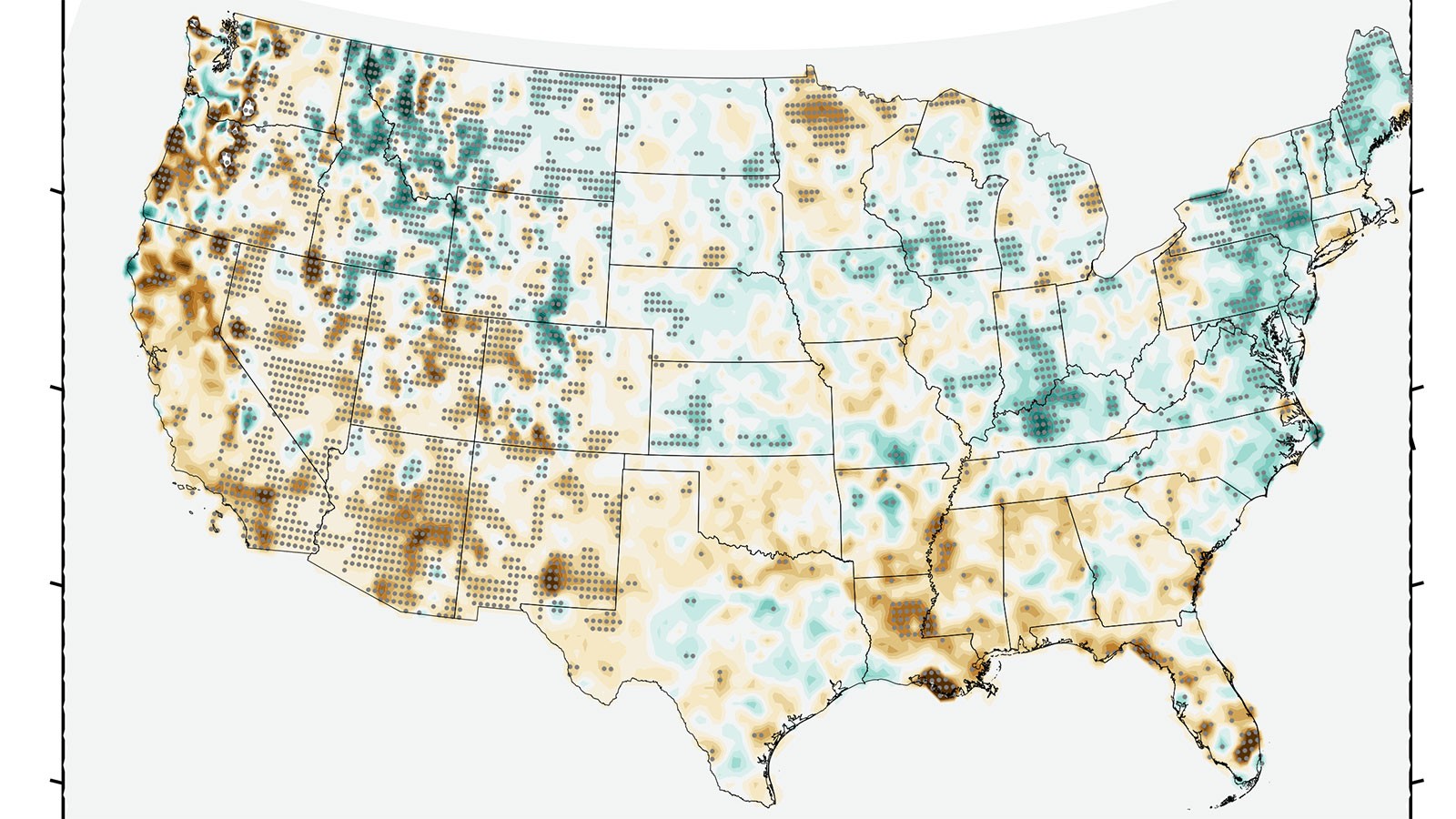Scientists Find High Pressure Ridges Aren't the Main Players in the West's Drying Climate
By Lynnette Harris |
Scientists seeking the causes for drought often, and quite logically, focus on large, persistent areas of high pressure, which are well-known to be associated with hotter and drier weather over the course of weeks and months. But a new report from an international team of climate scientists suggests day-to-day weather system changes have played a big role in a period of generalized drying in the western United States — and the cause wasn’t an increase in high-pressure areas but rather a decrease in low-pressure events.
The research, which has been published in the journal Geophysical Research Letters, may be a roadmap for better understanding the causes of drought across the globe — particularly as scientists seek to model future precipitation trends.
The study’s lead author, Wei Zhang, assistant professor in Utah State University’s Department of Plants, Soils and Climate, said the new analysis “is sort of like a dive into the statistics of a football game.”
“If you want to understand what happened during a game, knowing the score at the end of each quarter might be helpful, but it tells a very incomplete story,” said Zhang. “A score-by-score summary gets you closer to the reality of what happened, and a play-by-play breakdown gets you even closer than that.”
Zhang said his team’s analysis began by “sorting the plays.”
“But rather than looking at how many times a team ran the ball and how many times it passed, we looked at how often the weather picture appeared one way and how often it appeared another,” he said.
In total, the team identified five common “weather types,” general patterns of pressure distribution that occurred from 1980 to 2018, a time in which the West has been described as existing in a state of “megadrought.”
“Of course we were very interested in looking at the weather type that was associated with transient high-pressure events,” said co-author Professor Simon Wang, Zhang’s colleague at Utah State. “What we saw, however, was that those events didn’t really budge. The frequency we saw in the 1980s and 1990s was almost exactly what we observed in the 2000s and 2010s.”
What has changed, and dramatically, was a weather type associated with wetter- and colder-than-normal conditions. “The number of weather type events like that plummeted dramatically,” Wang said.
Other USU co-authors on the paper are doctoral students Grace Affram and Matthew LaPlante. The research received further attention as one of seven articles selected as noteworthy papers by editors at Science in their In Other Journals section. Editor H. Jesse Smith noted, “Zhang et al. identified five distinct weather patterns that occur in that region and conclude that it was a decrease in the frequency of low-pressure troughs, which are associated with cooler and wetter conditions, rather than more high-pressure ridges, that led to the observed drying. This trend is likely a consequence of human activity.”
Co-author Vittal Hari, a researcher at the Helmholtz Center for Environmental Research whose work is usually focused on European drought events, said the newly published paper may be helpful for researchers who are considering the causes of — and trying to predict — drying trends in other regions of the globe.
“The process of sorting decades of short-term conditions into weather types and then looking for trends in those conditions is a good model for exploration of changes to climates around the world, and gives us another signal to look for when interpreting models of a warming climate,” Hari said. “We may have to use a different sports analogy, though.”
WRITER
Lynnette Harris
Marketing and Communications
College of Agriculture and Applied Sciences
435-764-6936
lynnette.harris@usu.edu
CONTACT
Wei Zhang
Assistant Professor
USU Dept. of Plants, Soils & Climate
(435)797-1101
wei.zhang@usu.edu
Comments and questions regarding this article may be directed to the contact person listed on this page.







